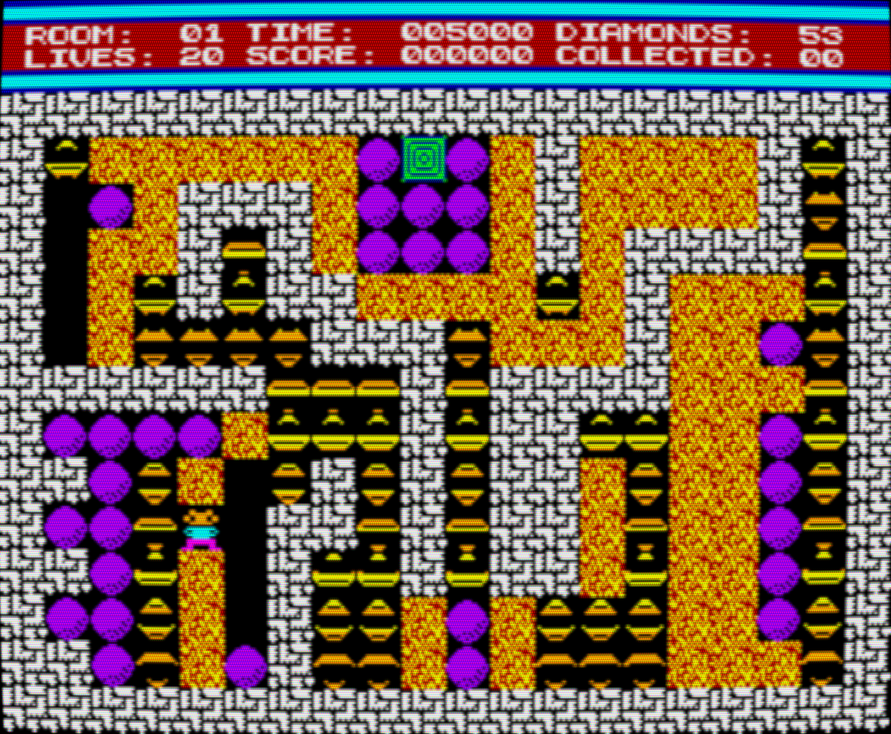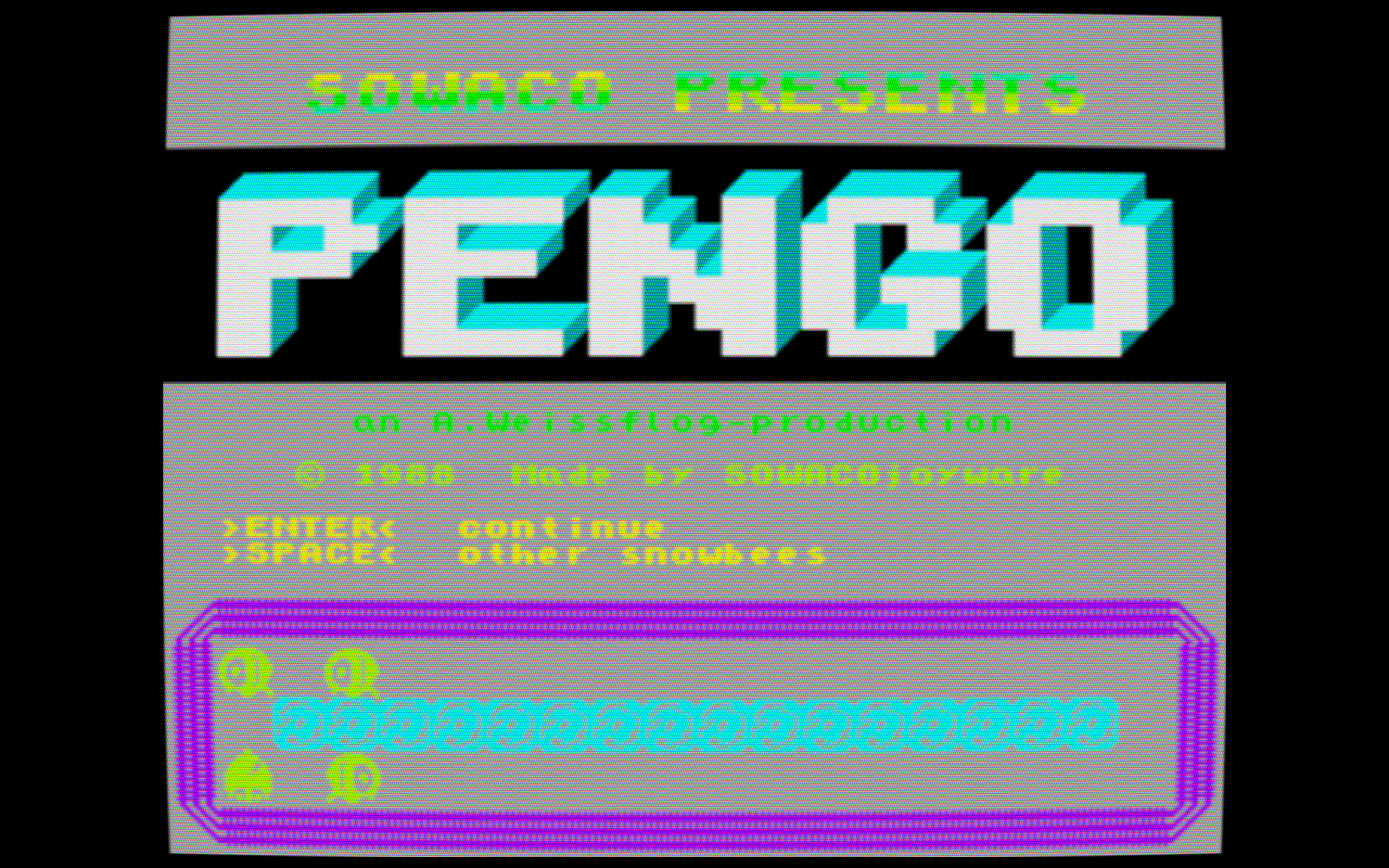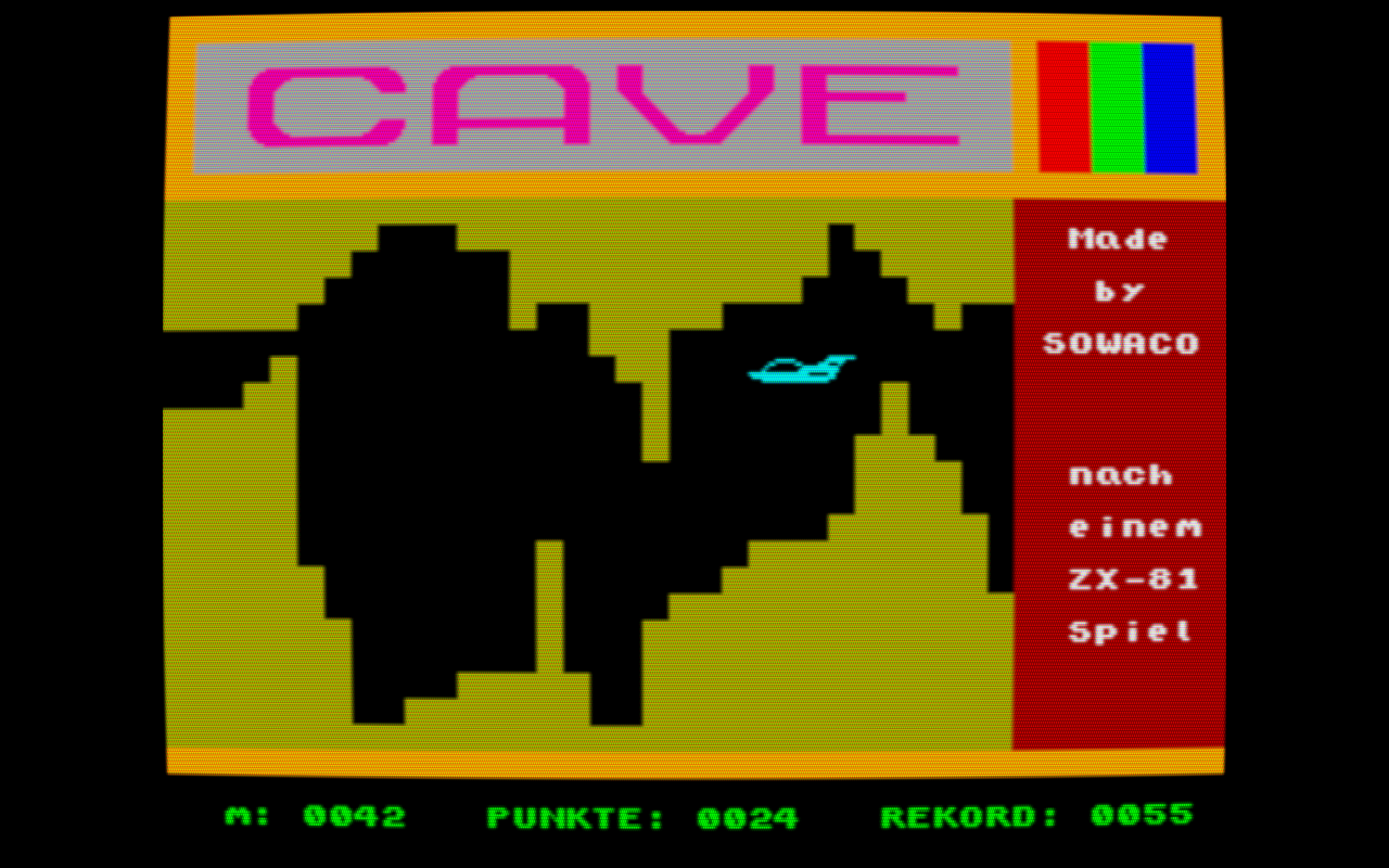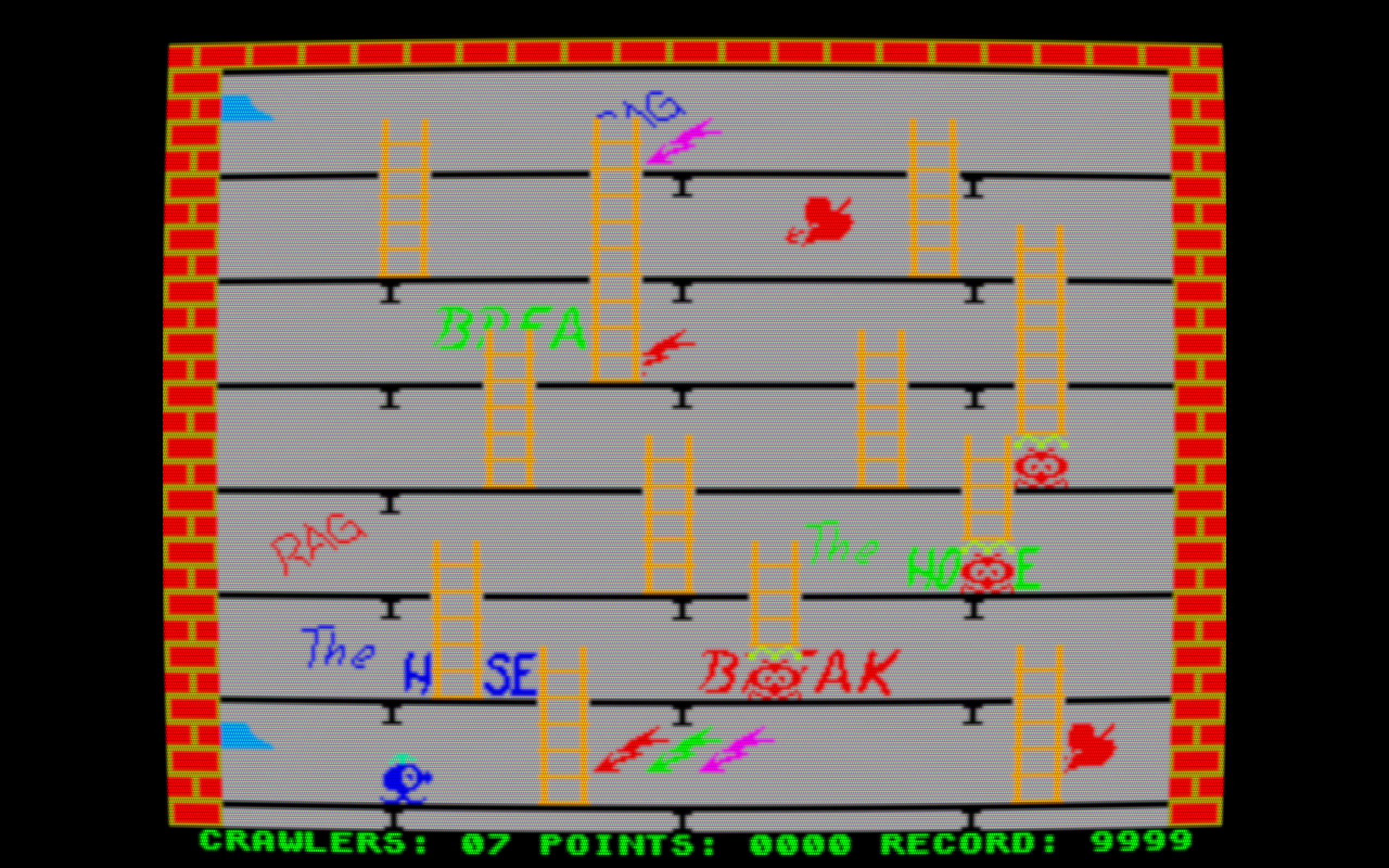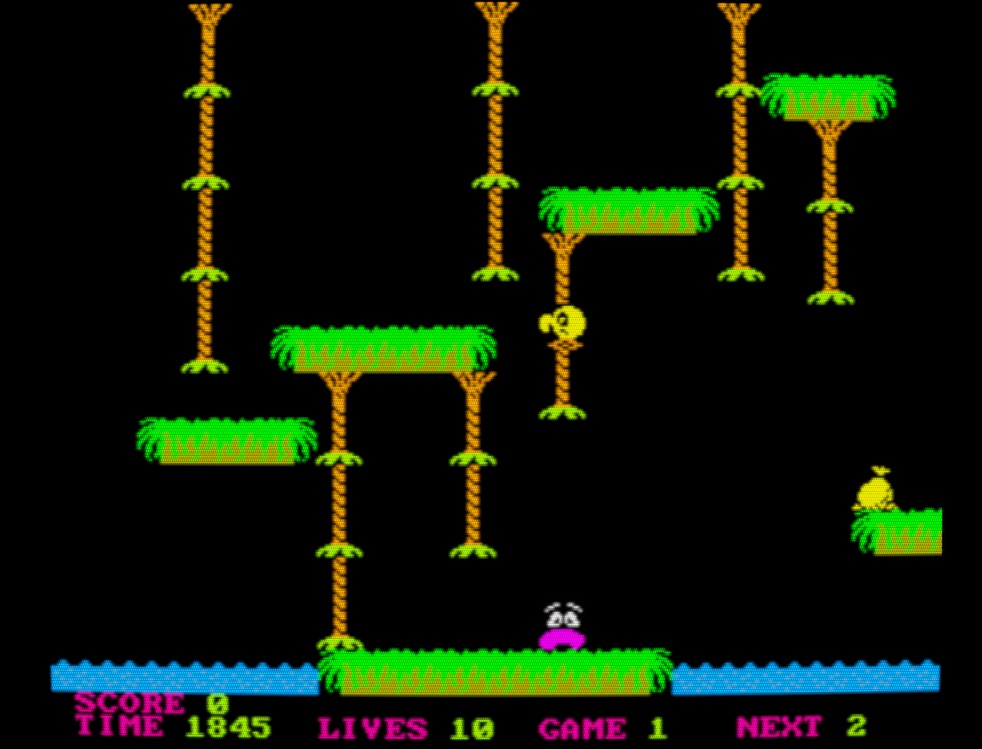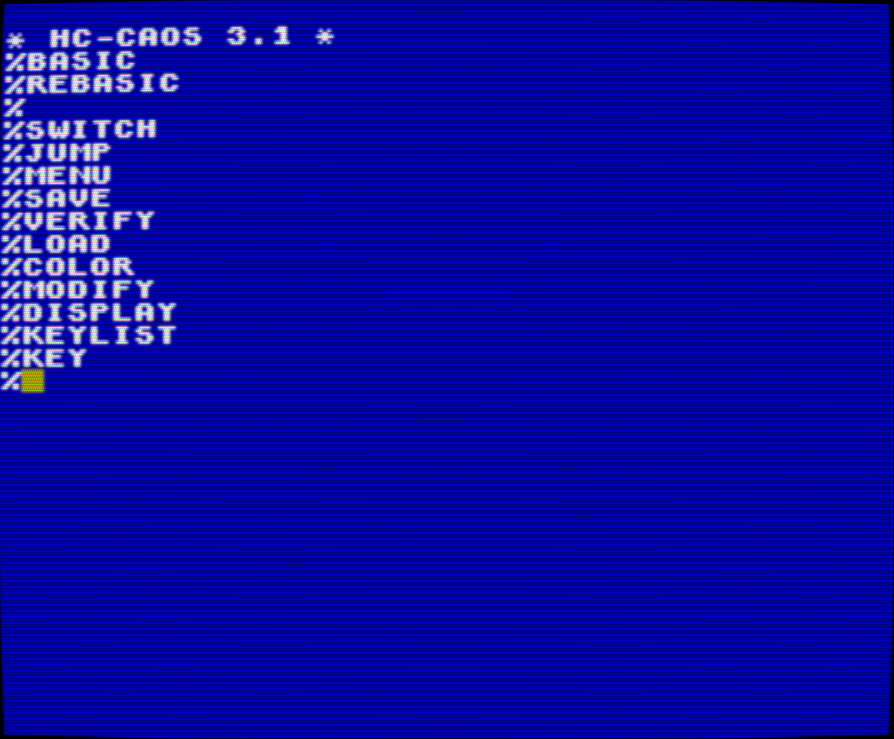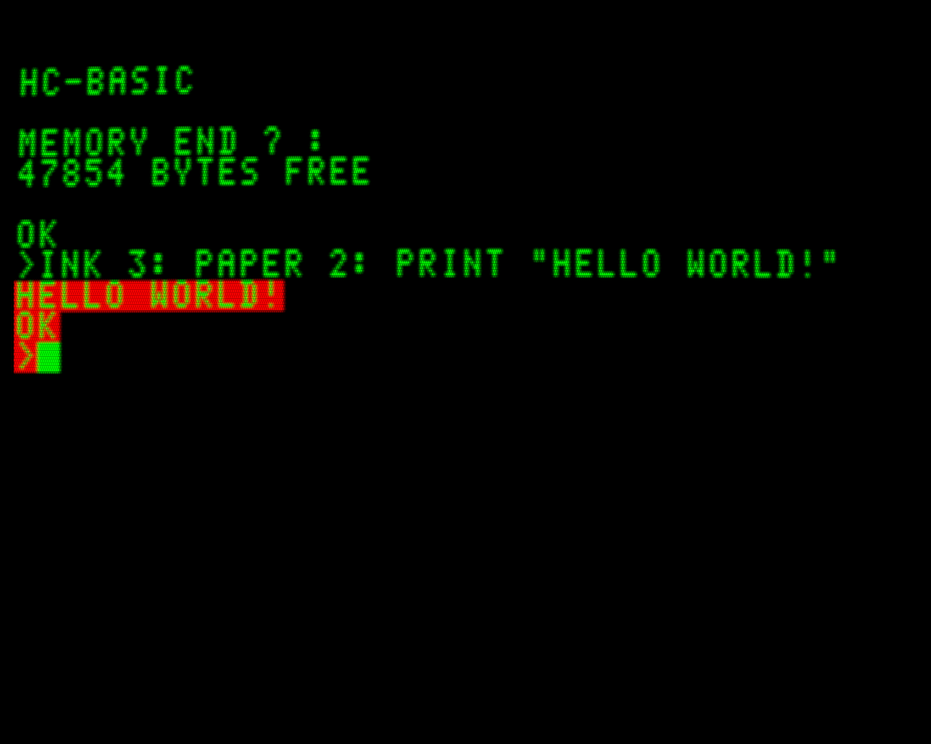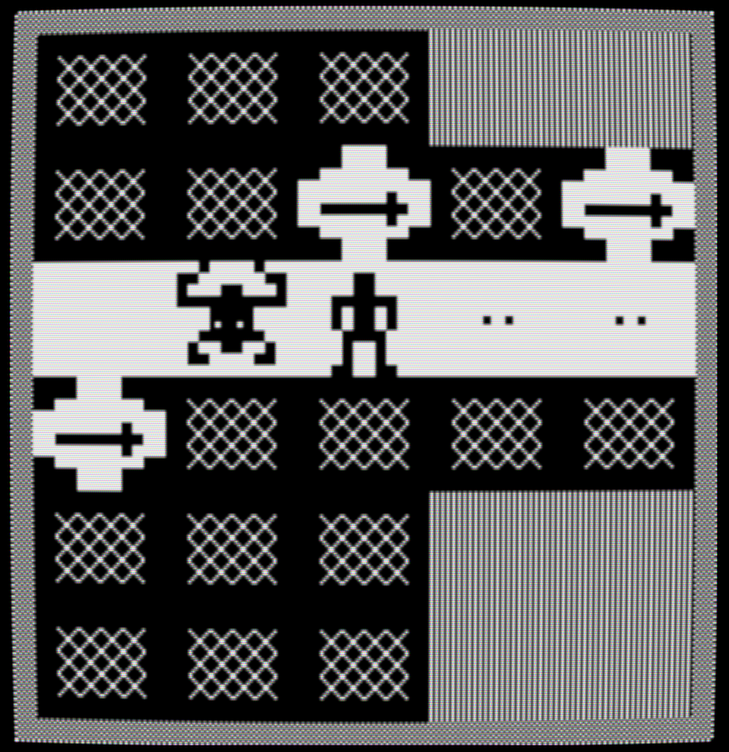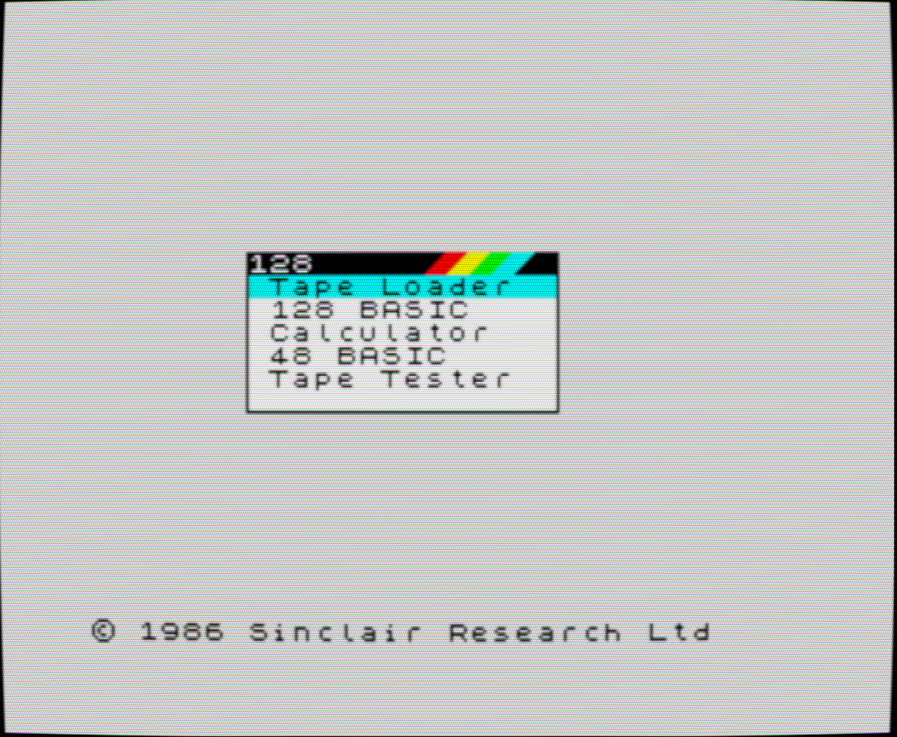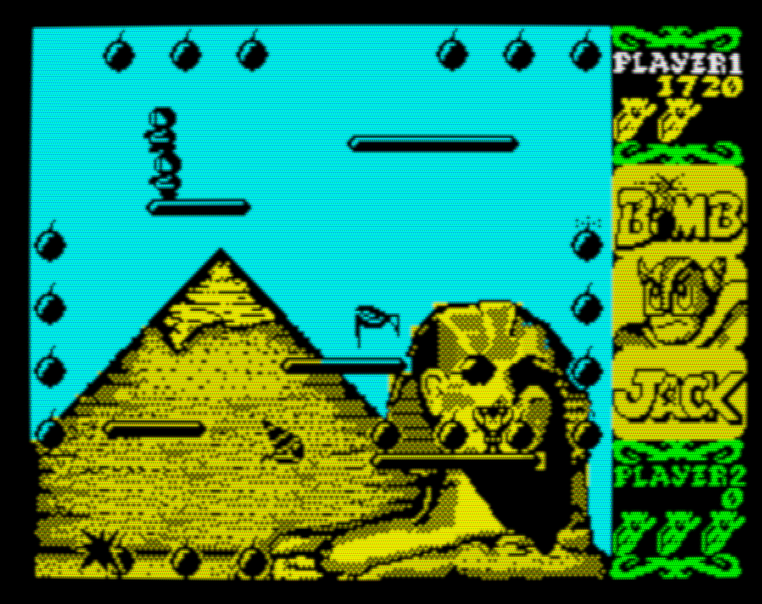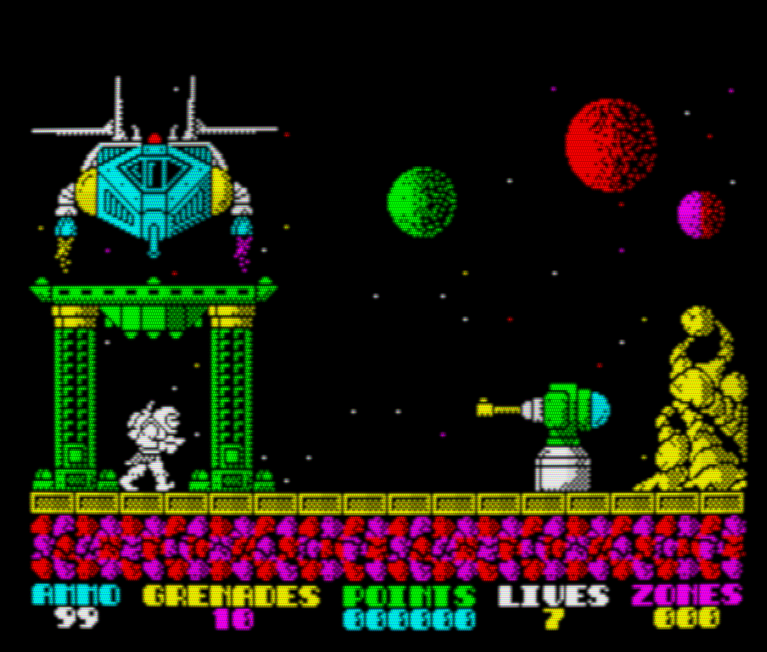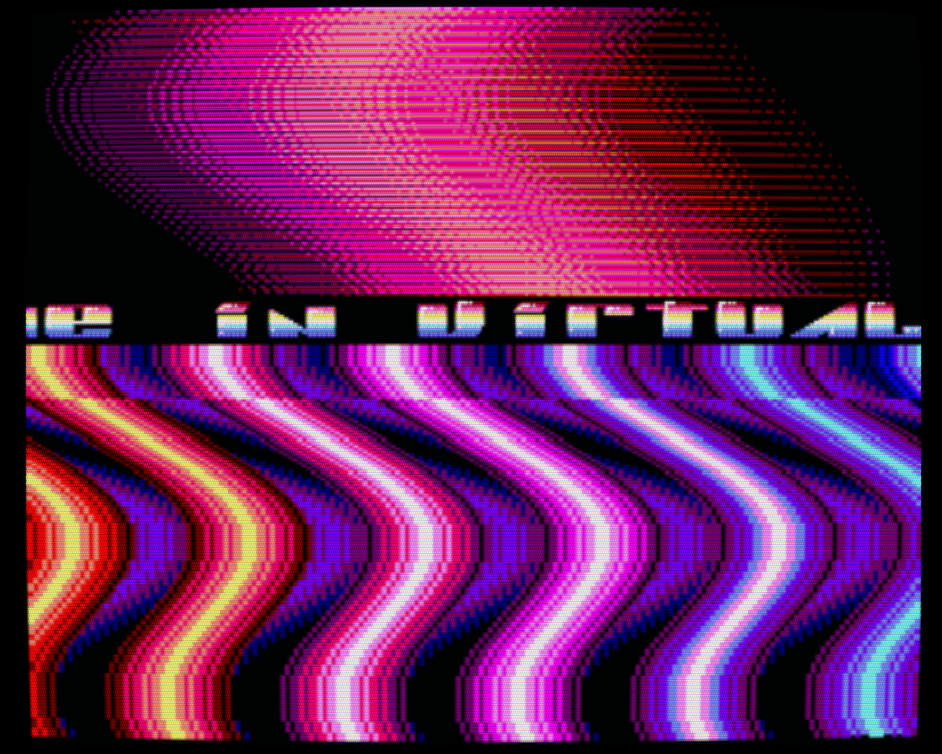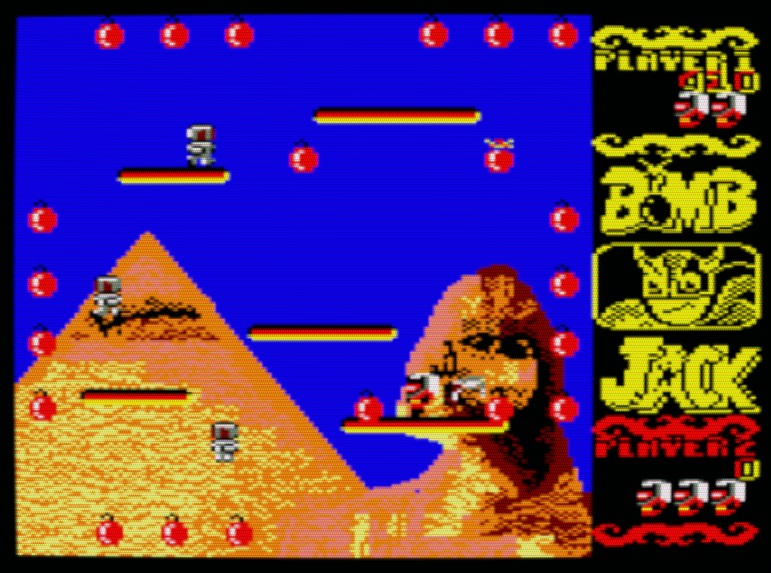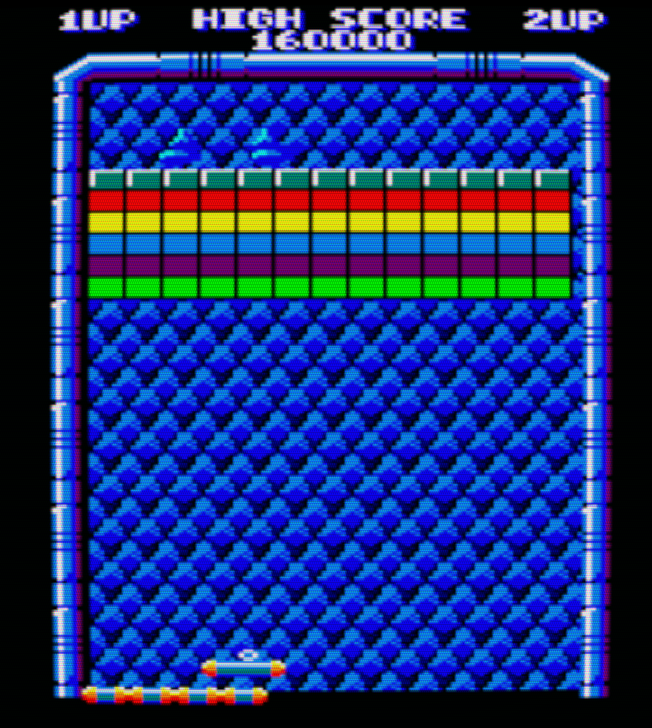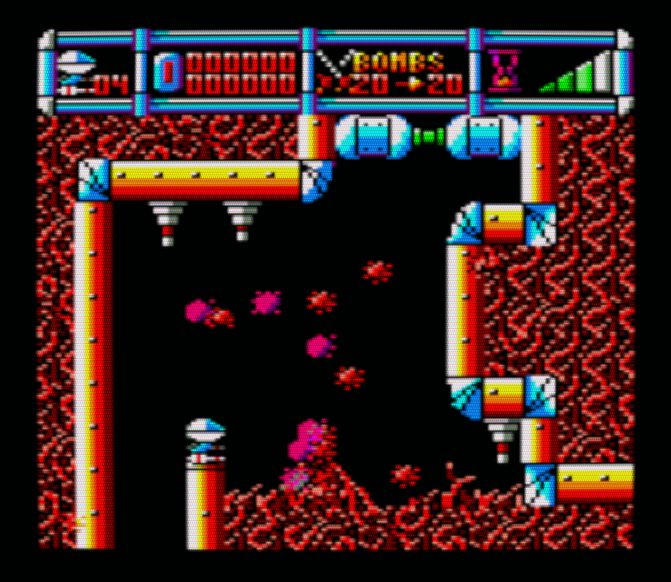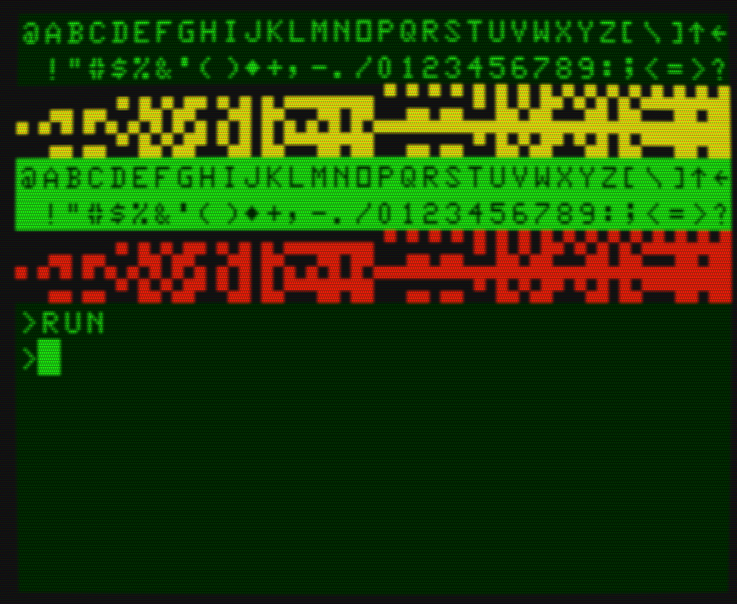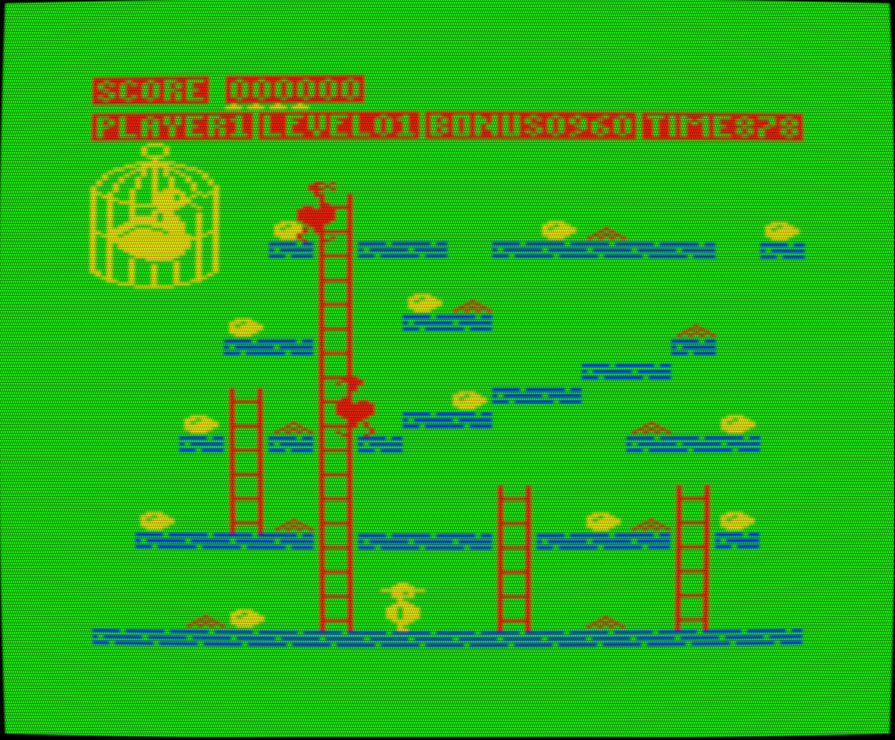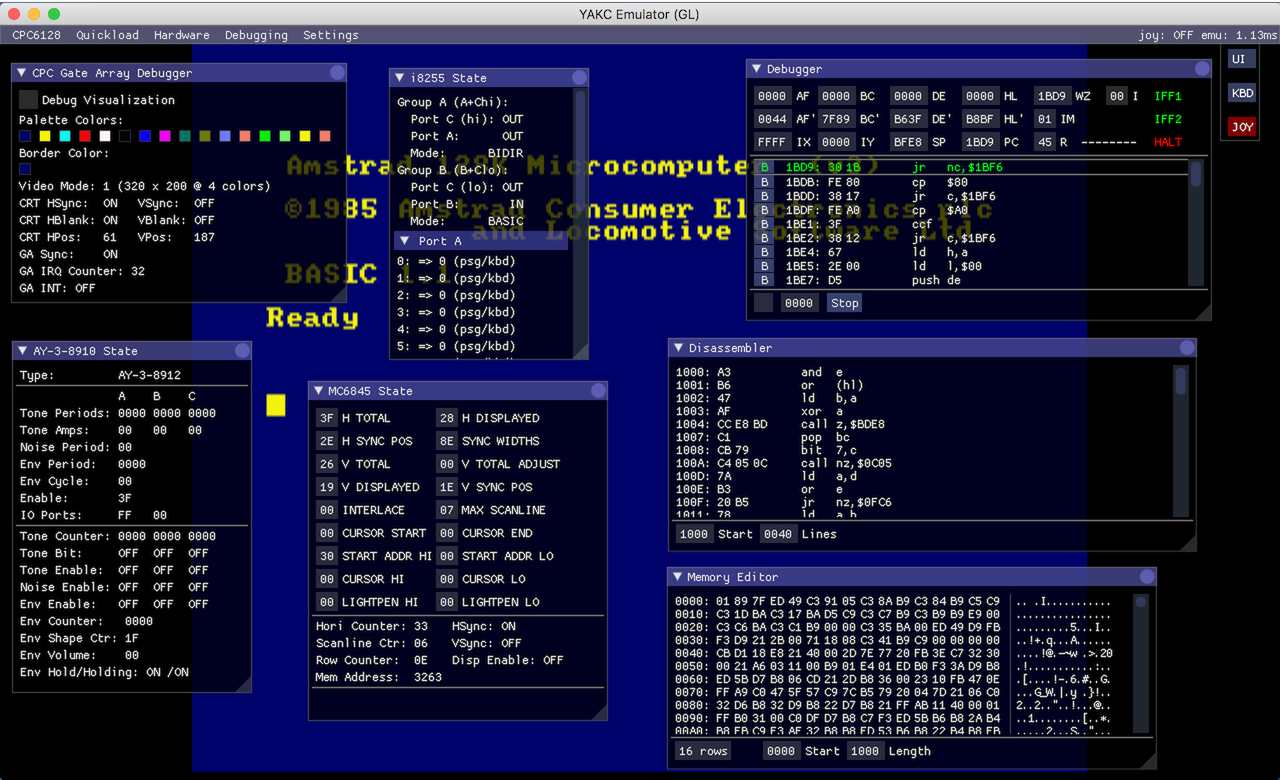NOTE: this project is abandoned. This is the followup project: https://floooh.github.io/tiny8bit/
Despite the name this is a multi-system emulator for 8-bit home computers.
It started as a KC85 emulator because this was the system I spent most of my youth on: https://en.wikipedia.org/wiki/KC_85
http://floooh.github.io/virtualkc/
This is a WebAssembly version. If this doesn't work, switch to the asm.js version through the top-left hamburger icon.
> python --version
Python 2.7.10
> cmake --version
cmake version 3.3.2
> git clone https://github.com/floooh/yakc
> cd yakc
> ./fips build
> ./fips run yakcappIn debug mode, the emulator tries to load additional ROMs and games from a local HTTP server at port 8000. Just do this:
> cd yakc/files
> python -m SimpleHTTPServer
...And run the emulator from another terminal window. When building in release mode, the emulator will load the data directly from the webpage at http://floooh.github.io/virtualkc/
YAKC currently emulates the following 8-bit systems:
- KC85/2, KC85/3, KC85/4, KC Compact (VEB Mikroelektronik Muehlhausen)
- Z9001 (aka KC85/1) and KC87 (Robotron Dresden)
- Z1013 (Robotron Riesa)
- Sinclair ZX Spectrum 48k and 128k
- Amstrad CPC464 and CPC6128
- Acorn Atom
Source code of the system emulators is here: https://github.com/floooh/yakc/tree/master/src/yakc/systems
The system emulators are built on top of dependency-free, header-only chip emulators written in C (https://github.com/floooh/chips).
Rendering and input is done through Oryol: https://github.com/floooh/oryol
Audio is done through SoLoud: https://github.com/jarikomppa/soloud
The extensive debugging UI is implemented with Dear Imgui: https://github.com/ocornut/imgui
Kudos to MAME for providing a reference when there was insufficient documentation available for emulated chips and computer systems: https://github.com/mamedev/mame
The following platforms are fully supported:
- asm.js / wasm
- OSX
- Windows
- Linux
The emulator should also build and run on Android, iOS and Raspberry Pi but this is less tested and there will be input- or performance-problems on those platforms.
A few implementation details are worth mentioning:
- on M6502 machines (currently only the Acorn Atom), the system is ticked per clock cycle and fully implements the M6502 memory access quirks (each cycle is a memory access, including 'junk accesses')
- on Z80 machines, the system is ticked with machine-cycle granularity (typical 3..5 clock cycles, or more if wait states are injected)
- all known undocumented Z80 behaviour is implemented, the M6502 implements the 'stable' undocumented instructions, but not most of the 'unstable' instructions
- communication between chips happens (mostly) with pin bit masks instead of specialized callbacks, this means the system emulation source code mimics how the different chips are connected on the motherboard instead of relying on 'high level recipes' which describe the functions of specific I/O addresses
All the East German computer models had 'unlicensed' Z80-chip-family clones called U880 (Z80 CPU), U855 (Z80 PIO) and U857 (Z80 CTC). The East German clones had some hardware bugfixes compared to the original Z80 and thus some undocumented instructions behaved slightly different. YAKC emulates the original Z80, not the 'fixed' U880 clones (doesn't make a difference with all software I tested).
These were East German home computers with fairly impressive hardware- and software-capabilities, at least given the 'real-world-socialist' economic restrictions of 80's Eastern Germany. Unlike many other Eastern computers, the KC85 line wasn't a direct clone of Western machines, but implemented some unique ideas both in hardware and software. In terms of hardware capabilities, the ZX Spectrum was the closest Western system, the KC85 had a slower CPU, but higher-resolution graphics.
- manufactured by VEB Mikroelektronikkombinat Muehlhausen from 1985 (KC85/2) to 1989 (KC85/4)
- Z80 CPU @ 1.75 MHz, Z80 PIO and Z80 CTC
- 320x256 display resolution with 16 foreground and 8 background colors
- 8x4 pixels or 8x1 pixels color attribute resolution (same idea as the ZX Spectrum but with smaller color attribute blocks)
- 16 KByte (KC85/2 and /3) to ~128 KB RAM (KC85/4)
- 8 KByte to 20 KByte ROM (operating system and BASIC)
- no hardware sprites, programmable video signal generator or dedicated sound chip
A few KC85 games:
KC85/3 start screen with operating system HC-CAOS 3.1:
This was another of the 'big three' East German 8-bit computer models, built by Robotron Dresden. The Z9001 was later renamed to KC85/1 even though it had no similarities with the KC85/2-based computers from Muehlhausen. The KC87 is identical to the Z9001 apart from a builtin BASIC. A color graphics module was optional (YAKC implements monochrome graphics for the Z9001 and color graphics for the KC87).
- manufactured by Robotron Dresden from 1984 (Z9001) and 1987 (KC87)
- Z80 CPU @ 2.5 MHz, 2(!) Z80 PIOs and a Z80 CTC
- 16 KByte RAM
- 4 KByte ROM, and additionally a 10 KByte ROM BASIC in the KC87
- 40x24 or 40x20 black-and-white or 8-color character graphics
KC87 running BASIC:
The Z1013 is the last and most simple of the East German computers emulated by YAKC. It was mostly a hobbyist computer sold as kit, and the only computer in Eastern Germany that was sold directly to citizens.
- manufactured by Robotron Riesa from 1985
- Z80 CPU @ 2.0 MHz, Z80 PIO
- 16..64 KByte RAM
- 2 KByte ROM
- 32x32 monochrome character graphics
A Z1013 running a clone of the ZX81 game Mazogs:
The ZX Spectrum was a British machine which was also popular as self-built hobbyist machine or official clone in the Eastern hemisphere because of its simple hardware architecture.
- manufactured by Sinclair from 1982
- 3.5 MHz Z80 CPU, custom 'ULA' chip, AY-3-8912 sound chip in the 128k
- 256x192 @ 15 colors in 8x8 color attribute blocks
YAKC currently doesn't emulate the 'contended memory' performance penalty when accessing video memory.
The iconic 128k start screen:
The 48k version of Bomb Jack:
Exolon on the 48k:
The start screen of Arkanoid RoD on the 128k:
The Amstrad CPC had a very interesting architecture which is surprisingly tricky to emulate. Even though the video system lacked hardware sprites, it made up for it by making clever use of the fairly programmable MC6845 video signal generator chip, which allow some graphics effects otherwise only known from the much more powerful Amiga.
The KC Compact is an outlier, it was an East German CPC clone produced from 1989, and cancelled soon after the Wall came down. The KC Compact emulated the custom Amstrad gate array chip with standard TTL logic, YAKC is cheating here a bit and treats all CPC models the same (the only difference of the KC Compact is a slightly different color palette, and different ROMs).
- manufactured by Amstrad, Schneider, MEK Muehlhausen and others from 1984
- 4 MHz Z80 CPU (real world perf more like 3.3 Mhz because of wait state injection)
- 64 or 128 KByte RAM
- 32 KByte ROM
- i8255 Programmable Peripheral Interface chip
- MC6845 CRT Controller chip
- AY-3-8912 Programmable Sound Generator chip
- Amstrad 40007/40010 custom gate array chip
- 27 hardware colors (32 with some redundant colors)
- 160x200 @ 16 colors, 320x200 @ 4 colors or 640x200 @ 2 colors display modes
The Amstrad 6128 start screen:
The DTC demo by Arkos and Overlanders:
The CPC version of Bomb Jack:
Arkanoid on the CPC:
Cybernoid:
The Atom is one of the early Acorn 8-bit computers with a very simple but clever architecture (especially for its early release date). Apart from the Netherlands it wasn't very popular in continental Europe. Currently this is the only system in YAKC with a MOS 6502 CPU.
- manufactured by Acorn from 1980
- 1 MHz MOS Technology 6502 CPU
- up to 40 KByte RAM
- up to 16 KByte ROM
- MC6847 Video Display Generator chip
- i8255 Programmable Peripheral Interface chip
- optional 6522 Versatile Interface Adapter chip
- mixed text/semigraphics 32x16 display mode
- various graphics display modes from 64x64 @ 4 colors up to 256x192 @ 2 colors
Acorn Atom mixed text/semigraphics mode:
The game 'Atomic Chucky Egg':
YAKC has an extensive debugging UI implemented with Dear Imgui:
